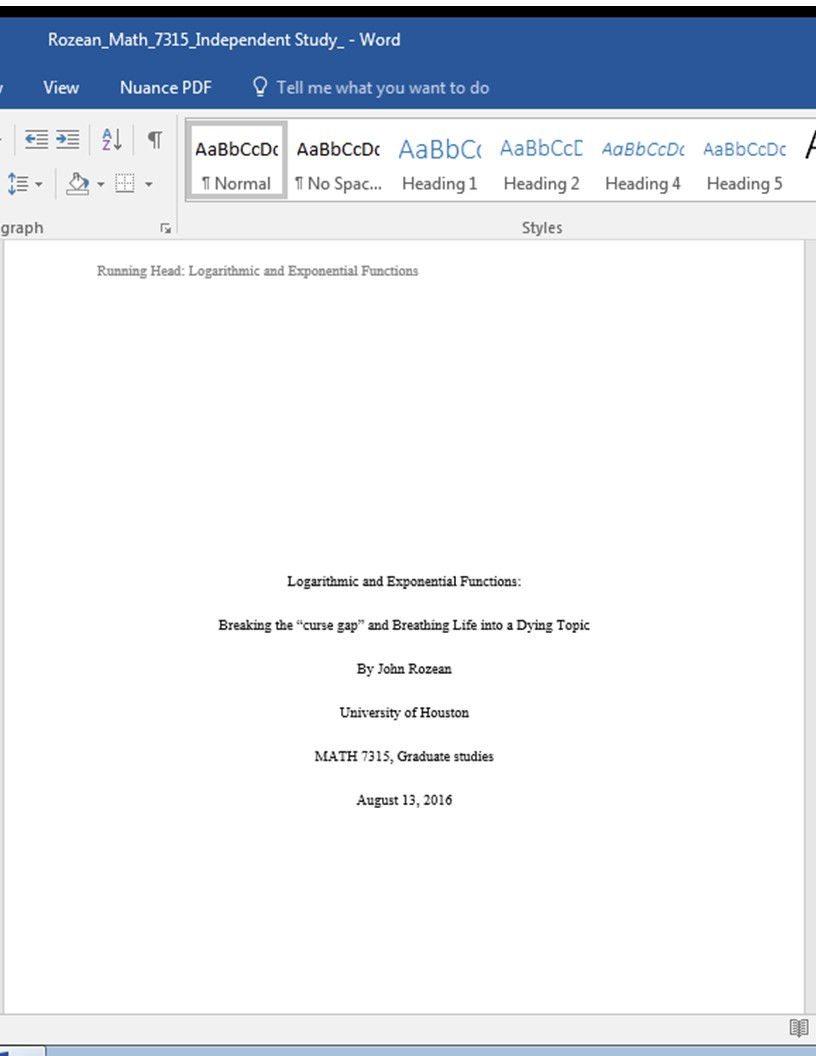Refining the Introduction...
- by John Rozean
- Aug 9, 2016
- 3 min read

Introduction
In an edutopia.org article Christopher Reddy cites several articles and studies that identify a phenomenon known as the “Curse of Knowledge.” While Reddy does make the connection to how this phenomenon has negative consequences on content mastery (Reddy, 2016), a Harvard Business Review article provides a better explanation in more general terms. The article states that “The problem is that once we know something—say, the melody of a song[1]—we find it hard to imagine not knowing it. Our knowledge has ‘cursed’ us. We have difficulty sharing it with others, because we can’t readily re-create their state of mind” (Heath, 2006). Reddy concludes that because of this phenomenon, teachers sometimes struggle to empathize with their students’ “content familiarity deficit”[2] as they are novices to new concepts. Reddy proposes seven methods[3] to “lift the curse” focused on avoiding simple “fact teaching,” and converging curriculum with “narratives,” “analogies and examples,” “emotion” and “novelty”[4] (Reddy, 2016).
Reddy’s seven methods can easily be put in sync with what Maor proposed when he advocated for the inclusion of math history in mathematics curriculums [5]. In addition, a Convergence article by Kathleen Clark and Clemency Montelle presents similar strategies directly related to logarithms. The Clark/.Montelle article is a self-proclaimed promotion of “the teaching of the logarithmic relation from its historical roots” (Clark & Montelle, 2011) such that math curriculum would better demonstrate the “crucial insights” and importance of the logarithm tool in progressing mathematics over time (Clark & Montelle, 2011). On this line of thinking, the following pages provide detailed examples[6] of how to break the curse of knowledge (Reddy 2016) in the secondary classroom, specifically in the case of teaching logarithmic and exponential concepts.
Chapter 1 deals with the methods and narratives of the Scottish inventor and mathematician John Napier who is generally given credit for the “invention” of a logarithmic system. This first chapter serves a dual purpose in provides an example of possible narrative content that can be incorporated into math instruction as well as an example of how the Reddy seven methods can be applied. Chapter 2 is dedicated to identifying and explaining the “curse gap” quantitatively as it exists in the current Texas secondary math curriculum – through the method of a keyword search examination of the TEKS[7]. Chapter 3 will discuss the modern academic framework of logarithms – as functions— and will demonstrate how the Reddy “curse lifters”[8] and Maor’s historical context[9] -- using Chapter 1 as an example — are effective ways to generate interest to the topic of logarithms. This chapter will explain how multi-sensory[10], novel[11] examples that construct context through a historical context are a much more effective teaching method than simply presenting theory and fact with little explanation[12] (Maor, 1994). The third chapter also demonstrate the existence of the “curse gap”[13] in the Texas curriculum categorically in the TEKS paragraphs[14].
Chapter 4 is dedicated to Swedish clock maker Joost Burgi’s logarithm tables and the work on logarithms done by the Englishmen Henry Briggs, leading into a multi-sensory[15], novel[16], and historically connected (Maor, 1994) approach to understanding the current common logarithm. Chapter 5 will continue to apply Maor and Reddy’s methods with examples that demonstrate logarithmic properties transitioning toward final considerations of the number e and natural logarithms.
[1] See “*quantifying the curse”; Chapter 2
[2] Abstract
[3] Figure 3.1
[4] See Figure 3.1:17.Teach Facts;4.Narratives;5.Analogies and Examples; 1.Emotion;6.Novelty respectively
[5] See “Abstract”
[6] Figure 3.1:Analogies and Examples
[7] Texas Essential Knowledge and Skills
[8] Figure 3.1
[9] See “Abstract”
[10] Figure 3.1:2.Multi-Sensory Lessons
[11] Figure 3.1: 6.Novelty
[12] Figure 3.1:7.Teach Facts
[13] See “Chapter 2:*chapter introduction”
[14] Figures 3.5 and 3.6
[15] Figure 3.1:2.Multi-Sensory Lessons
[16] Figure 3.1: 6.Novelty































Comments